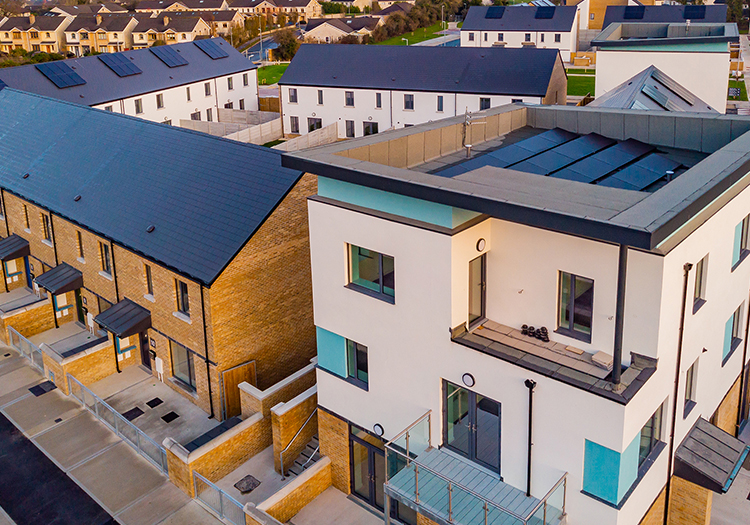
Electrical Systems in Homes for Low Carbon Compliance
Contact Varming Consulting Engineers today to learn how we can help you design and implement cutting-edge electrical systems in homes for low carbon compliance, ensuring your residential projects meet all regulatory standards while achieving maximum efficiency.
The focus on electrical systems in homes for low carbon compliance is rapidly increasing, as the industry shifts away from traditional fossil fuel-based solutions. With low carbon regulations becoming more stringent, modern building services must adapt by incorporating innovative electrical technologies. This blog explores how advanced electrical systems and smart controls can support compliance with these regulations in new residential developments
Meeting Low Carbon Regulations with Electrical Systems
In homes, electrical systems are increasingly seen as a viable means of achieving both space heating and hot water provision. Mixed-mode systems, which combine various electrical technologies, are likely to become the norm, with domestic hot water often accounting for the largest portion of energy demand. Such systems rely on well-established principles, but recent advancements have enhanced their flexibility and efficiency.
Success in these systems depends on the integration of smart controls. Smart sensors, zoning, and wireless communication protocols like Wi-Fi and ZigBee are key to ensuring seamless operation. These controls adjust based on conditions such as weather, occupancy, and predicted energy needs, ensuring maximum efficiency and comfort for occupants.
Electrical Environmental Systems and Control
The foundation of an effective low-carbon electrical system lies in M&E engineering and its emphasis on high-performance electrical components. Smart electrical systems in homes utilise linked sensors that monitor factors like occupancy and temperature. Through the integration of adaptive and predictive controls, the system optimises energy usage, providing heating or cooling as needed while reducing wastage.
A smart, centralised control system can coordinate all electrical services in the home, including lighting, heating, and ventilation, ensuring that they operate at peak efficiency. This connectivity allows for greater flexibility and responsiveness to changing environmental conditions. Moreover, with the growing adoption of wireless technology, these controls are becoming more accessible and easier to implement in new homes.
Smart Homes and Energy Efficiency
The concept of the smart home is intrinsically linked with building services in modern residential designs. Smart electrical systems can manage everything from lighting to power distribution, responding in real time to occupant behaviour or external conditions. For example, adaptive lighting systems that adjust based on natural daylight can dramatically reduce electricity consumption, while automated energy-saving modes for electrical appliances ensure optimal energy usage.
Electrical systems can also be paired with renewable energy sources such as solar photovoltaic (PV) panels to further reduce carbon footprints. This combination allows homeowners to generate their own electricity, store it, and use it as needed, further enhancing the energy efficiency of the home. These systems, when designed by expert design consultants, can significantly lower the dwelling’s energy consumption and help meet stringent regulatory requirements.
Conclusion
The future of residential buildings lies in smart, well-integrated electrical environmental systems. Through innovation and expert engineering, homes can meet low carbon regulations while maintaining comfort and convenience. At Varming Consulting Engineers, we specialise in creating these cutting-edge solutions by leveraging our expertise in M&E engineering and building services design.
Contact us today to learn how we can support your project with efficient, low-carbon electrical solutions tailored to meet regulatory standards.

